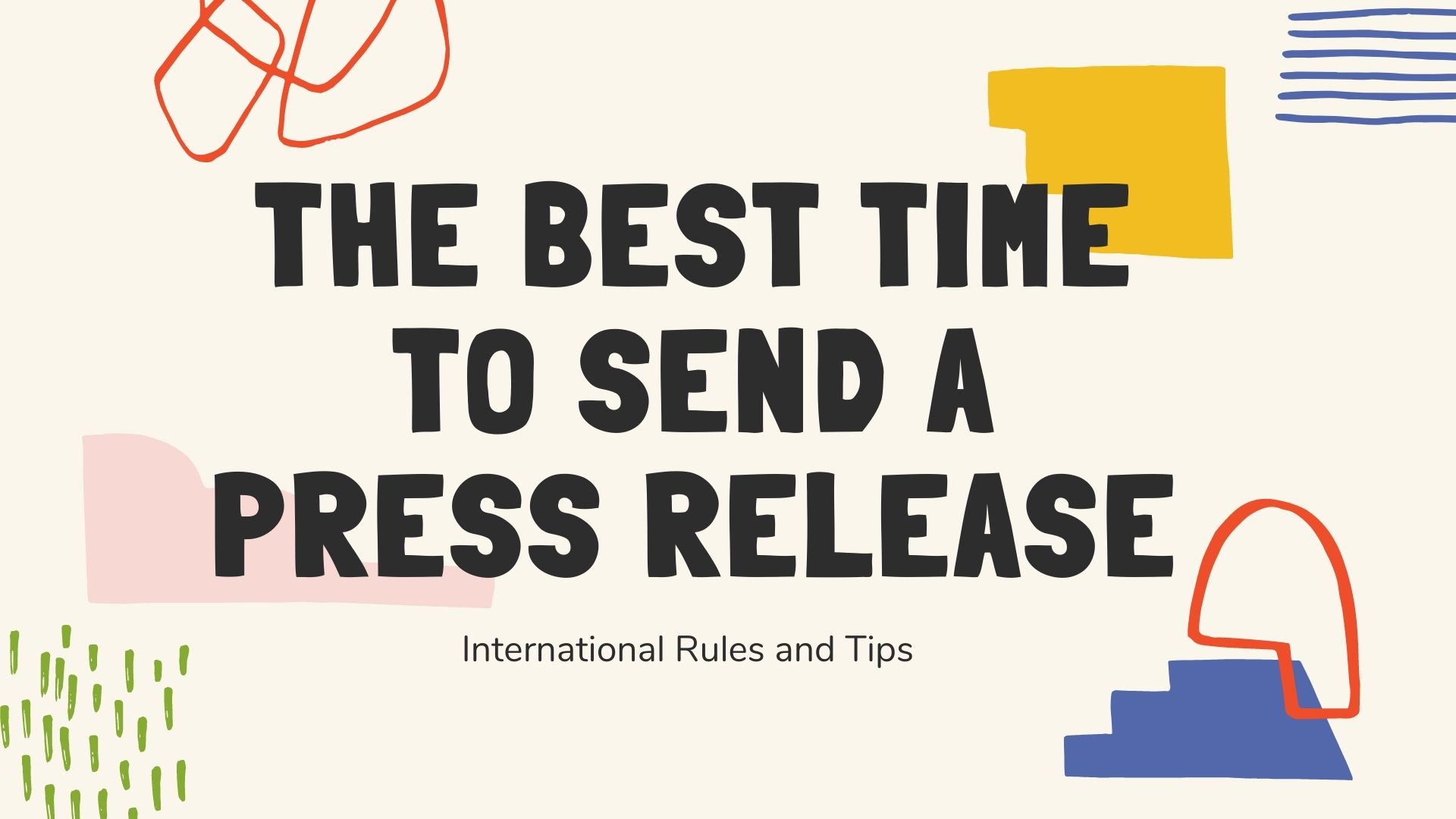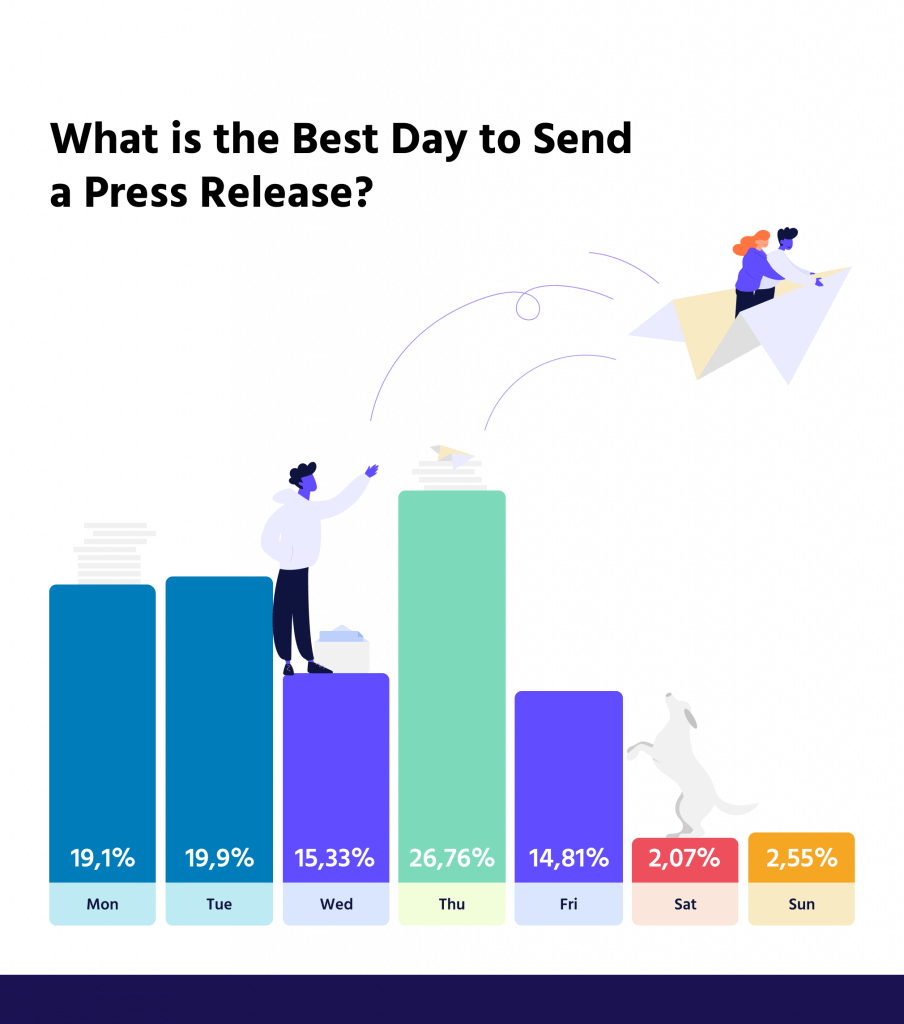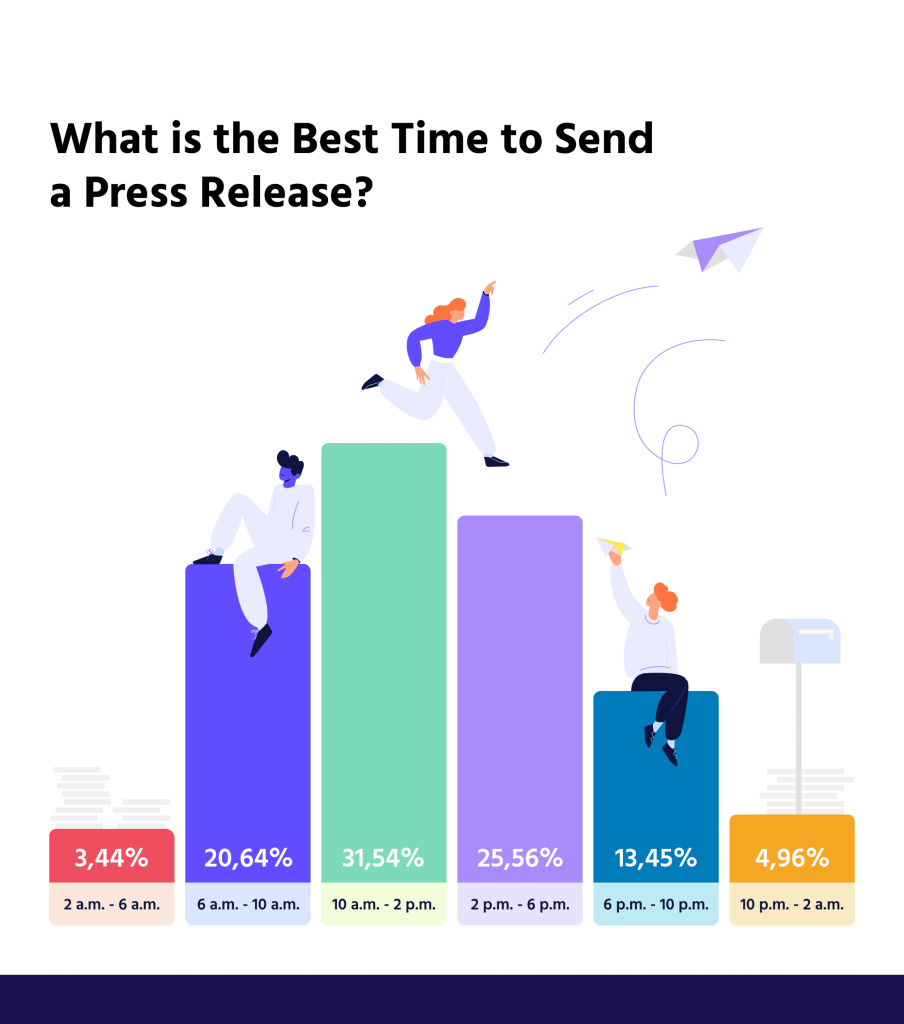
Timing is everything when it comes to unleashing the power of aWhat's The Best Time To Send A Press Release? Ever wondered when the perfect moment is to launch your news into the world? Dive into the strategic world of PR timing and uncover the secrets behind maximizing your press release impact. From the break of dawn to the tranquility of twilight, this comprehensive guide unveils the ideal windows to capture attention, engage audiences, and skyrocket your visibility.
In this informative exploration, discover the science and artistry behind timing your press release to perfection. Delve into the factors that influence audience responsiveness and engagement levels throughout the day and week. Uncover the nuances between weekdays and weekends, mornings and evenings, to strategically optimize your message's reach.
The Best Time Of Year To Send A Press Release
The best time to send a press release is between 10 am and 2 pm, this is when editors open about one-third of all the emails they've received. Early mornings are less effective: open rates drop to 20.5% between 6 and 10 am.
Here are 7 proven timing hacks for sending your press release:
1. Track And Analyze Results
Continuously monitor your press release performance using analytics tools to identify the most effective timing strategies. Track open rates, click-through rates, and media coverage to understand which days, times, and formats work best for your target audience and industry.
2. Leverage Embargoes Strategically
Embargoes can be a powerful tool to generate anticipation and exclusivity for your press release. By setting an embargo date, you ensure that your release is not published before a specific time, allowing you to coordinate with key media outletsand influencers.
3. Tailor To Your Audience
Understand the media outlets and journalists you're targeting and tailor your release schedule accordingly. If you're targeting online publications, consider sending releases earlier in the day to catch their attention during their morning editorial meetings. For print publications, sending releases mid-week might be more effective.
4. Consider Industry-Specific Trends
Different industries may have their own optimal times for sending press releases. For instance, in the techindustry, Tuesdays and Thursdays might be more favorable due to product launch schedules. Research your industry's trends to determine the best days and times for your specific niche.
5. Account For News Cycles
Be mindful of major news eventsor holidays that might overshadow your press release. If a significant news story is breaking, it's best to wait until the buzz has subsided before sending your release. Similarly, avoid sending releases on major holidays when journalists are less likely to be working.
6. Target Specific Times Of Day
Aim to send your press release during the hours when journalists are most likely to be checking their emails. Muck Rack suggests sending releases between 8 AM and 10 AM or between 1 PM and 3 PM EST. These times align with the typical workday for journalists and offer a higher chance of your release being seen.
7. Consider The Day Of The Week
According to Muck Rack, Tuesdays and Wednesdays are generally the best days to send press releases, as they tend to have higher open rates and click-through rates. This is because journalists and bloggers typically catch up on news and trends after the weekend and are more likely to review their inboxes mid-week.
8. Consider The Industry
- Tech industry -Tuesdays and Thursdays are often more favorable due to product launch schedules.
- Education industry -Back-to-school season (July-September) and graduation season (May-June) can be good times for sending press releases.
- Retail industry -Holiday seasons (e.g., December, November) can be effective times for sending press releases.
9. Consider The Target Audience
- B2B audiences -Sending releases during the workweek (Monday-Friday) is typically best.
- B2Caudiences -Weekends or evenings might be more appropriate, as consumers are more likely to be checking their emails during these times.
General Tips For Timing Press Releases
- Send releases 2-3 weeks in advance of the announcement date.
- Consider using a press release distribution service.
- Follow up with journalists after sending your release.
Here are some additional considerations for timing press releases based on the time of year:
Spring (March-May)
- New product launches
- Industry events and conferences
- Seasonal promotions
Summer (June-August)
- Back-to-school announcements
- Summer travel and leisure promotions
- Community events and festivals
Fall (September-November)
- Holiday season planning
- Industry awards and recognition
- New product introductions
Winter (December-February)
- Holiday gift guides and promotions
- New year's resolutions and trends
- Year-in-review and company updates
Building Relationships Is More Important Than Socially Engineering Your Audience
Building relationships is indeed more important than socially engineering your audience in the long run. While social engineering tactics can provide short-term gains, they often backfire and damage your credibility in the long run. Here's why:
- Authenticity and Trust -Building relationships is about fostering genuine connections with your audience, based on mutual trust and understanding. When you genuinely care about your audience's needs and interests, they can sense your authenticity and are more likely to trust you.
- Long-Term Sustainability -Social engineering tricks may provide a temporary boost in engagement or sales, but they are not sustainable strategies. Once people realize they have been manipulated, they will lose trust and disengage. Building relationships, on the other hand, creates a loyal and engaged audience that will support you over time.
- Reputation and Growth -A reputation for transparency and authenticity is invaluable in today's world. When people know they can trust you, they are more likely to engage with your content, recommend you to others, and become loyal customers.
- Ethical Considerations -Social engineering tactics often raise ethical concerns. When you manipulate or deceive people, you are not respecting their autonomy or making informed decisions. Building relationships, on the other hand, is based on mutual respect and open communication.
Ways To Build Relationships With Your Audience
- Be consistent -Maintain a consistent brand voice and deliver content regularly.
- Provide value -Offer valuable content that is relevant and interesting to your audience.
- Be transparent -Share your values, goals, and challenges openly with your audience.
- Show appreciation -Thank your audience for their support and let them know how much you value their engagement.
- Engage in meaningful conversations -Respond to comments, answer questions, and participate in discussions.
Building relationships takes time and effort, but the rewards are well worth it. When you have a loyal and engaged audience, you have a solid foundation for long-term success.
How Far In Advance You Should Send A Press Release?
The best time to send a press release depends on the type of announcement, the target audience, and the desired outcome. However, there are some general guidelines that can help you increase the chances of your press release being picked up by journalists.
1. For General Announcements And Product Launches
- Send your press release 2-3 weeks in advance of the announcement date -This will give journalists enough time to research your story and prepare their coverage.
- For Events:
- Send your press release 3-4 weeks in advance of the event date -This will give journalists enough time to plan their coverage and secure any necessary travel arrangements.
2. For Embargoed Announcements
Send your press release under embargo at least 24 hours in advance of the embargo lift date -This means that journalists will not be able to publish their stories until the embargo is lifted.
3. For Crisis Communications
Send your press release as soon as possible after the crisis occurs -However, take some time to gather the facts and prepare a clear and concise message before you send it out.
Tips For Timing Your Press Release
- Be aware of holidays -Journalists are less likely to be working on major holidays, so avoid sending press releases on these days.
- Use a press release distribution service -A press release distribution service can help you get your release in front of a wider audience of journalists.
- Consider the day of the week -Tuesdays and Wednesdays are generally considered the best days to send press releases, as journalists are typically catching up on news and trends after the weekend.
- Consider the time of day -Aim for between 10 AM and 2 PM local time for the journalists you're targeting. This is when editors are most likely to be checking their emails and reviewing pitches for potential stories.
- Consider the news cycle -Be mindful of major news events or holidays that might overshadow your press release. If a significant news story is breaking, it's best to wait until the buzz has subsided before sending your release. Similarly, avoid sending releases on major holidays when journalists are less likely to be working.
By following these guidelines, you can increase the chances of your press release being picked up by journalists and getting the attention of your target audience.
Embargos And High-profile Coverage
While there are general guidelines for the best time to send a press release, there are also a few exceptions to the rule:
1. High-profile coverage -If you're hoping to get coverage in a high-profile publication or from a well-known journalist, you may need to adjust your timing accordingly. For example, you may need to send your press release earlier than usual to give the journalist enough time to review it and prepare their coverage.
2. Embargoed releases -In some cases, you may want to send your press release under embargo. This means that journalists will not be able to publish their stories until a certain date and time. This can be a good way to generate anticipation for your announcement.
What Is The Best Day To Distribute A Press Release?
There isn't a single "best" day to distribute a press release, as the optimal timing depends on several factors. However, here are some general guidelines and considerations:
Days Of The Week
- Generally - Mid-week (Tuesday-Wednesday) tends to be ideal. Journalists are usually more active on these days and less likely to be swamped with emails.
- Avoid -Mondays and Fridays are often busiest for journalists, and your press release might get buried. Thursdays can also be less effective due to pre-weekend planning.
Time Of Day
- Morning -Ideally, send your press release between 9:00 AM and noon in your target audience's time zone. This increases the chance of it being seen before journalists start their afternoon meetings.
- Avoid - Early mornings or late evenings are less likely to be seen.
News Cycle
- Consider major news events -If a major news story is dominating the headlines, it's best to avoid sending your press release on the same day. Wait for the news cycle to settle before getting lost in the noise.
- Leverage upcoming events - If your news relates to an upcoming event, consider timing your press release to coincide with pre-event coverage.
Target Audience
Who are you trying to reach?Journalists with different beats may have different schedules. Research their typical workflow and preferred communication methods.
Overall
- Focus on quality over quantity -Don't rush to send your press release just because it's Tuesday morning. Make sure it's well-written, newsworthy, and targeted to the right audience.
- Use press release distribution services -They can help you reach a wider audience and ensure your release gets noticed by relevant journalists.
- Track your results -Monitor how your press release performs and adapt your timing strategy based on the data.
Frequently Asked Questions About What’s The Best Time To Send A Press Release?
What Date Should Be On A Press Release?
The date on your press release dateline should reflect the day you distribute or publish your news release, not the day you write it or the day of the event. This helps readers determine how fresh and relevant your story is and whether they should follow up or act on it.
What Is The Best Day For A Press Conference?
The optimal days for a news conference are Tuesday through Thursday. It can be hard to capture media interest on Mondays when people are trying to catch up from the weekend. Scheduling a news conference on Friday and there's a good chance your message will get lost over the weekend.
What Is The Best Time To Pitch Journalists?
Between 5 a.m. and 12 p.m. EST Based on responses from the survey, the best time to pitch journalists in 2021 is between 5 a.m. and 12 p.m. EST. Below is a breakdown of when reporters prefer to receive email pitches. 34% of journalists prefer to be pitched between 5 a.m. to 9 a.m. 34% of journalists prefer to be pitched between 9 a.m. to 12 p.m.
Conclusion
The timing of your press release holds immense potential in shaping its success. Through this exploration, we've uncovered the nuanced intricacies that influence when to unleash your message for maximum impact. Remember, there is no one-size-fits-all approach; instead, consider your audience demographics, industry trends, and the nature of your news to craft a tailored timing strategy.
Ultimately, by harnessing the insights gleaned from this journey into PR timing, you're poised to make informed decisions that resonate with your audience. Embrace experimentation, monitor results, and adapt your approach accordingly. By leveraging the art and science of timing, you'll elevate your press release game, ensuring your news stands out amidst the noise, and captivates your audience's attention.

